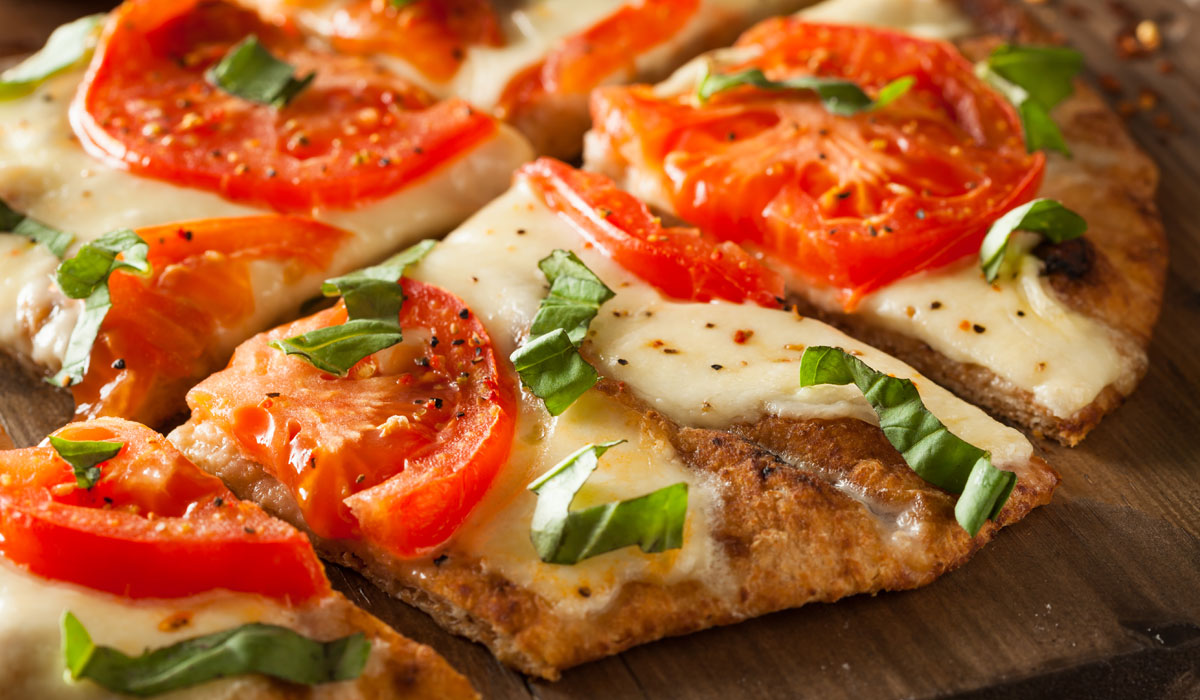
It’s Better with Natural Cheese
Stretchy mozzarella pizza. Charred cheddar bacon flatbread. Creamy Colby-Jack frittata breakfast bowl. Cheese shines in these prepared dishes and is often the characterizing ingredient that attracts the shopper.
Not only does cheese add flavor, color and visual appeal, it contributes nutrition—namely protein—and functionality. It’s great for melting with other ingredients, such as seasonings, vegetables and meats, to create superior taste and texture. But cheese can do so much more.
It can premiumize a food, like pizza. Bake asiago into the crust. Add sliced fresh mozzarella or include a few dollops of ricotta on top.
The flatbread gets worldly when cheddar is swapped for feta and fig bits combine with bacon. While, imported brie adds extra richness to the breakfast bowl, a first-class upgrade that consumers are willing to pay a premium for.
As consumers continue to expand their palates, they seek out new ethnic foods and flavors. This trend is pushing formulators and culinary professionals to get creative with authentic ingredients in order to provide consumers with the flavor adventure they crave. Cheese can do that and a whole lot more.
Americans Love Cheese
U.S. cheese consumption is at an all-time high. The U.S. Department of Agriculture Economic Research Service reports that in 2016, per capita natural cheese consumption was 36.6 pounds, an increase of 12.1% since 2006.
When not on center stage—think cheeseburger, macaroni and cheese, and pizza—cheese works well in supporting roles in just about every application, as it is extremely versatile and easy to use. Traditional favorites such as cheddar and mozzarella comprise more than half of all natural cheese consumption, according to USDA. Within these two categories, product developers can explore cheese with extra layers of flavor, for example blue marbled cheddar and smoked mozzarella.
Cheddar and mozzarella may be the most consumed cheeses in the U.S., but there are so many other cheeses to explore. With an evolving palate, today’s consumers are up to the task.
Internationally inspired cheeses—everything from hard Italian cheeses such as asiago and pecorino Romano to Dutch Gouda and Greek feta—add authenticity to recipes. Consumers are experiencing these cheeses when dining out and they want to continue the global flavor adventure when shopping for foods for at-home meals. They also want to be informed about authentic ingredients, value recipes created by native chefs and appreciate imported ingredients with bold flavors.
“Everyone’s definition of authentic is different, so when it comes to ethnic fare, it’s vital to clarify the flavor profile and ingredients upfront so consumers aren’t surprised or disappointed,” says Kelly Weikel, Director of Consumer Insights, Technomic, Chicago.
“Additionally, ethnic options must feel accessible rather than intimidating and this can be achieved by providing flavor and sourcing information about each ethnic dish.”
Specialty Cheeses
Many globally inspired cheeses are characterized as specialty products. When added to other foods, their descriptions are increasingly being used as callouts on labels to create a point of differentiation. Combined with terms such as artisan and hand-crafted, consumers find these foods to be premium and are therefore willing to pay a premium price.
The Specialty Food Association shows that cheese and cheese alternatives lead the specialty food market with $4 billion in sales in 2017, representative of 3.9% of the $140.3 billion specialty foods market. The association defines specialty foods as products of the highest grade, style and/or quality in their respective categories. Their specialty nature derives from a combination of some or all of the following qualities: uniqueness, origin, processing method, design, limited supply, unusual application or use, extraordinary packaging or channel of distribution/sales. The segment is thriving, with 65% of consumers stating they purchase specialty foods.
While cheese and cheese alternatives are grouped together in the data, natural cheese overwhelmingly dominates the category. In fact, natural cheese is what makes meat alternatives and plant-based foods—a growing specialty food segment—more delicious and nutritious. (See sidebar on page 2.)
Knowing cheese is the most popular specialty food category, product developers are finding creative ways to formulate with different styles of cheese, ranging from fresh unripened types to cooked, pressed and aged varieties. Many are described as artisanal, implying that the cheese is produced primarily by hand, in small batches, with particular attention paid to the tradition of the cheesemaker’s art, according to the American Cheese Society.
Plant-Based and Vegetarian Meals Can Benefit from Natural Cheese for a Better Flavor Profile
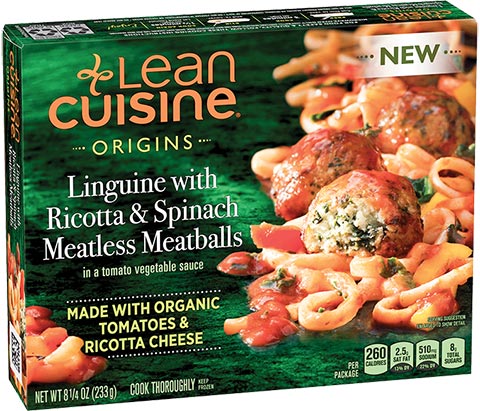 Vegetarian, flexitarian, lessitarian, whatever the term, many consumers are making efforts to eat less meat and more plant-based foods. That does not mean they are going vegan. In fact, many vegetable-centric prepared foods rely on natural cheese for flavor, functionality and nutrition.
Vegetarian, flexitarian, lessitarian, whatever the term, many consumers are making efforts to eat less meat and more plant-based foods. That does not mean they are going vegan. In fact, many vegetable-centric prepared foods rely on natural cheese for flavor, functionality and nutrition.
The refrigerated Nourish Bowls line, for example, now includes two plant-based protein veggie noodle concepts intended to be microwaved for a hot meal. Both varieties—Basil
Pesto and Tomato Bolognese— include a vegan meat alternative while also containing real parmesan cheese, which provides the umami taste characteristic of real meat.
Better-for-you frozen food brand Lean Cuisine is expanding its menu with Origins, a line of 14 meatless comfort dishes made with at least 70% organic ingredients. The company’s culinary experts selected wholesome and accessible ingredients to put a new flavorful twist on plant-based proteins and vegetables, playing at the intersection of a desire for meatless options and an increasing demand for organic foods. The Butternut Squash Lasagna, for example, contains organic pasta, butternut squash, layers of goat cheese, spinach and warm spices to deliver 17 grams of protein.
The limited-edition Roasted Garlic White Bean Alfredo features organic fettuccine, spinach and yellow carrots covered with a creamy roasted garlic Great Northern bean alfredo cheese sauce. Another specialty is the Linguine with Meatless Meatballs.
The balls are made by combining organic ricotta cheese with spinach and other ingredients, including parmesan cheese. The latter not only contributes a savory umami taste, it also assists with binding ingredients, much like breadcrumbs, and is a source of protein.
The Vegetable Lasagna is prepared using an authentic Tuscan cooking approach characterized by simple, whole vegetables not covered in heavy sauces or excessive cheese.
Organic low-fat ricotta cheese is used as a lighter alternative to traditional whole milk ricotta, while a touch of Monterey Jack cheese holds the vegetables together without the characteristic stringiness of mozzarella.
Pizza – Mozzarella Cheese and So Much More
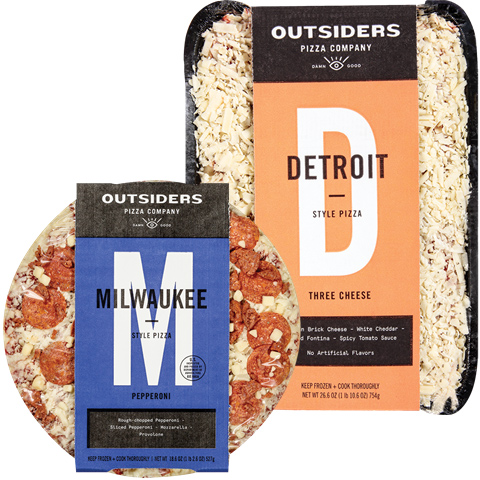 It’s been nearly 20 years since California Pizza Kitchen made its retail debut in the freezer department, shaking up frozen pizza. Today, large global brands and regional entrepreneurs are finding success when they use specialty cheeses, as well as non-Italian natural cheeses, to give their pies flavorful twists.
It’s been nearly 20 years since California Pizza Kitchen made its retail debut in the freezer department, shaking up frozen pizza. Today, large global brands and regional entrepreneurs are finding success when they use specialty cheeses, as well as non-Italian natural cheeses, to give their pies flavorful twists.
When newcomer Outsiders Pizza Co., for example, set out to create a frozen pizza brand, the company implemented the rule of “no same old same old.” The product developers travelled the country eating lots of pizza and fell in love with a number of lesser-known regional recipes.
The brand made its debut with six pizza concepts, three from each Detroit and Milwaukee tasting experiences. The recipes celebrate the ingredients and flavors of these two Midwestern cities.
Under the Detroit banner there’s BBQ Pulled Pork + Bacon with white cheddar and brick cheeses; Genoa Salami with the same two cheeses; and Three Cheese, which also includes fontina. The Milwaukee banner is a little more edgy, with the Spicy Sausage pizza topped with cheese curds, a Wisconsin favorite. The Pepperoni pizza includes mozzarella and provolone, while the Three Cheese pizza carries the tagline “sweet mother of Wisconsin: this is real cheese pizza.” It contains a hearty topping of mozzarella, provolone and Colby Jack.
The plant-based trend is growing in the frozen pizza category. Caulipower markets cauliflower-crust pizzas. Made with real cauliflower, the Margherita honors the classic recipe with diced vine-ripened tomatoes, mozzarella cheese and signature sauce made from a blend of spices, extra virgin olive and garlic. Three Cheese is a mix of mozzarella, parmesan and white cheddar atop the same sauce. Veggie features ripe red, yellow and green peppers atop mozzarella cheese and a savory sauce.
There’s also a growing number of gluten-free frozen pizza options. Of course, cheese is gluten-free, and by blending bold-flavored cheeses, formulators ensure a desirable pizza experience, something that’s often challenged when a leavened wheat crust is eliminated.
Cheese Takes Center Stage in Adult-Centric Snacks and Meal Kits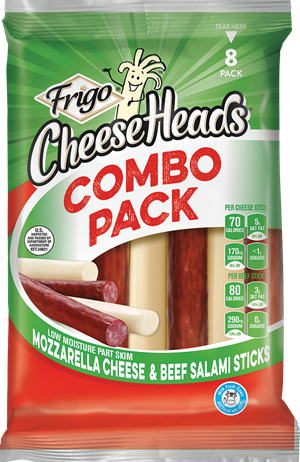
Convenience reigns; snacking has become the most popular dining daypart; and meal kits continue to evolve. Cheese complements all of these trends.
Nine in 10 consumers snack multiple times throughout the day, with the notion of three square meals long gone, according to The Hartman Group, Bellevue, Wash. This makes snacking the most significant eating occasion for food innovators to target and many are including protein-packed flavorful cheese in premium products designed for adult taste preferences.
Eggland’s Best Snacks feature a hard-cooked peeled egg, along with cheese and one other food. Combinations are: bacon and cheddar cheese, chocolate- covered almonds and cheddar cheese, olives and feta cheese, and salami and provolone cheese.
Frigo Cheese Heads, known for its original string cheese, launched a line of cheese and meat combination packs a few years ago. Taking cues from the newer specialty meats that are becoming popular, the brand now offers on-trend combinations, such as mozzarella with beef salami and queso blanco with chorizo sticks. Flavor pairings such as these cater to the evolving palates of mainstream America.
Red Clay Gourmet is snackifying its award-winning pimento cheese spread. New Dip ‘N Devour contains a hefty portion of classic sharp cheddar, hickory smoked cheddar, flame-roasted jalapeno or sriracha pimento cheese spread along with mini Croccantini crackers.
Other innovative snacking concepts include Italian cheese slices rolled with premium charcuterie and fresh mozzarella balls with balsamic drizzle. How about a wine-in-the-park snack box for two? The convenient pack includes two or three mini portions of specialty cheese, flatbread squares, chutney and marmalade, along with a knife for spreading. Throw in a candle for extra ambiance.
Many cheese snack packs may be modified and featured as starters or desserts in meal and salad kits. Think bagel chips with an herb cream cheese shmear to accompany chicken Caesar salad. How about packaged blue cheese crumbles and praline pecans as a topping for a meal kit featuring grilled seasoned sirloin on mixed whole grains? There are also cheeses described as farmstead. These are made with milk from the farmer’s own herd on the farm where the animals are raised.
Innovative Formulating Ideas
With today’s consumers craving new, authentic taste experiences, formulators are exploring innovative ways to work with cheese. Sometimes it’s simply swapping a mainstream cheese with something more specialty. Other times it’s blending the recognizable cheese with the exotic to provide a level of familiarity while also offering some flavor profile.
Authentic Hispanic cheeses, for example, are replacing the more mainstream Monterey Jack or pepper Jack. Manchego has a nutty flavor with great melting properties. Cotija, often referred to as the parmesan of Mexico, is a fresh, salty and crumbly cheese that can top all types of dishes.
Parmesan is being blended with other aged Italian cheeses to add new flavor to traditional ricotta and mozzarella recipes, from lasagna to ravioli. And where does it say mozzarella can’t be used with other cheeses on pizza? Culinary specialists are getting quite creative with cheese use on America’s favorite food.
Try Gouda instead of butter and milk in mashed potatoes. It’s a semi-soft cheese, so it adds creaminess and a distinct nutty flavor.
Small amounts of blue cheese in soups, sauces and dressings add creaminess and nuttiness without creating a characterizing musty flavor. Blue cheese may also be added to products containing cheddar to increase the aged and sharp cheese flavor notes. This is a trick some formulators use to boost umami, which in turn allows for a reduction in added salt and a decrease in sodium content.
“Made with natural cheese” claims added value to all types of foods. Other attributes worth calling out include the provenance of a cheese, such as Wisconsin sharp cheddar, or its age, e.g., two-year aged asiago. Getting creative with cheese names and finished product descriptions attracts today’s adventurous consumers.
“Authenticity is a core ingredient to winning today’s influential shoppers,” says Anne-Marie Roerink, Principal, 210 Analytics, San Antonio, Texas. “Shoppers will make room in their budgets for better-for-you choices when benefits are clear.”
The Cheese Ingredient May Be a Food’s Feature Story
Consumers expect transparency from food brands. When natural cheese is part of the product, make sure you tell the cheese’s story. Talk about the cows, the farms and the farmers.
Responsibly produced cheeses are a compelling story. Consumers appreciate reading about animal care and handling practices. Many want to support sustainable production processes.
Saputo has a zero-tolerance policy for any act of animal cruelty. The company expects all milk producers to comply with recognized standards validated by a third- party animal welfare audit. Saputo is also committed to pursuing environmentally responsible business practices.
These efforts are part of the cheese’s story and can be communicated on packaging and social media.
Other elements of the story include the cheese making process. Is the cheese hand crafted? Maybe it’s made by a certified cheesemaker. Is it made using local milk?
That local milk may be a story in itself, as it may be a multi-generation family-owned farm. Is the cheese made in small batches? Does it undergo any extra aging steps? Depending on the cheese, various claims may be made, including grass fed, organic and no-artificial growth hormones.
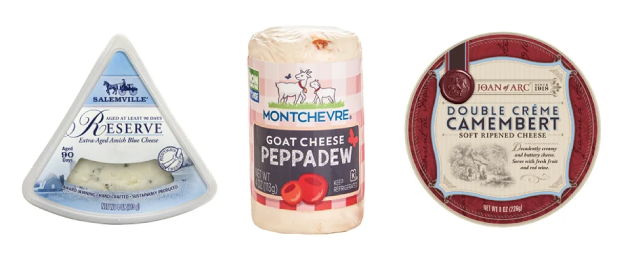 Saputo Wins Numerous Awards at 2018 American Cheese Society
Saputo Wins Numerous Awards at 2018 American Cheese Society
From humble beginnings and guided by a vision that American cheese could mean more than sliced singles, the American Cheese Society (ACS) was founded in 1983 by Dr. Frank Kosikowski of Cornell University as a national grassroots organization for cheese appreciation and for home and farm cheesemaking. This community of cheese aficionados includes hundreds of dedicated and passionate individuals and companies who have united to create a vibrant and flourishing cheese society poised to continue to push the limits in the next quarter century.
The 2018 ACS Judging and Competition occurred July 23 and 24, 2018. It is the largest competition of its kind for American-made cheeses. Growing from 89 entries 35 years ago, the 2018 event welcomed 1,954 entries from 259 companies representing 35 U.S. states, five Canadian provinces, Mexico, Columbia and Brazil. ACS awarded a total of 364 medals including 103 gold (first place), 124 (second place) and 137 bronze (third place).
Saputo received eight accolades.
Salemville®
2nd Place – Reserve Blue Cheese
2nd Place – Gorgonzola
Montchevre®
2nd Place – Fresh Goat Cheese with Peppadew
2nd Place – Bandaged Goat Cheese
3rd Place – Fromage Blanc
3rd Place – Goat Milk Cheddar
3rd Place – Fresh Goat Cheese with Honey
3rd Place – Oh- La- La ! Fresh Spreadable Goat Cheese
Joan of Arc®
2nd Place – Camembert
3rd Place – Double Crème Brie
Subscribe to our blog
Posts by Topic
- CPG Manufacturer (12)
- Retail (12)
- Global (9)
- Packaging (8)
- cheddar cheese (8)
- Blue Cheese (6)
- Transparency (6)
- Consumer Trends & Insights (5)
- Feta Cheese (5)
- Frozen (5)
- Lunch (5)
- National (5)
- Research & Development (5)
- Snack (5)
- parmesan cheese (5)
- protein (5)
- Better-for-You (4)
- Cheese Cubes (4)
- Clean/Free-From (4)
- Condiments (4)
- Dinner (4)
- Gen Z (4)
- Goat Cheese (Chèvre) (4)
- Herbs & Spices (4)
- Keto (4)
- Milk (4)
- Millennials (4)
- Peppers (4)
- Ricotta Cheese (4)
- hard cheese (4)
- Blend (3)
- Breakfast (3)
- Consumer (3)
- Convenience (3)
- Desserts (3)
- Dips & Sauces (3)
- Food & Beverage Trends & Insights (3)
- Fresh Mozzarella Cheese (3)
- Fruit (3)
- Gen X (3)
- Great Midwest (3)
- Health & Wellness Trends & Insights (3)
- Ingredients (3)
- Meal Kit (3)
- Montchevre (3)
- Mozzarella Cheese (3)
- Nutrition (3)
- Pizza (3)
- Retail Trends & Insights (3)
- Salt (3)
- Snacks (3)
- Social Media (3)
- Specialty Cheese (3)
- Spirits (3)
- Stella (3)
- String Cheese (3)
- Supply Chain (3)
- Varieties (3)
- Wine (3)
- vegetables (3)
- American Cheese Society (2)
- Applications (2)
- Asiago Cheese (2)
- Baby Boomers (2)
- Beer (2)
- COVID-19 (2)
- Flavors & Ingredients Trends & Insights (2)
- Fontinella Cheese (2)
- Generational Marketing (2)
- Grab-and-Go (2)
- Main Dishes (2)
- Mobile (2)
- Organic (2)
- Organic & Non-GMO (2)
- Pairings (2)
- Premium Mozzarella Cheese (2)
- Salemville (2)
- Silent Generation (2)
- Soft & Fresh Cheese (2)
- Spreadable Cheese (2)
- Toppers (2)
- Vegan & Vegetarian (2)
- Vegetarian (2)
- goat’s milk (2)
- marketing & communications (2)
- process (2)
- romano cheese (2)
- sheep’s milk (2)
- traditional mozzarella cheese (2)
- All-Natural (1)
- Artisan Cheese (1)
- Beverages (1)
- Black Creek (1)
- Breads (1)
- Brie Cheese (1)
- Certification & Education (1)
- Certified Cheese Professional (CCP) (1)
- Chain (1)
- Cheese Crumbles (1)
- Cheese Sticks (1)
- Cheesemakers (1)
- Cheesemonger (1)
- Clean (1)
- Colby Cheese (1)
- Cost Management (1)
- Craft (1)
- Cream (1)
- Cultures (1)
- Customer Experience (1)
- Deli (1)
- Delivery (1)
- Facilities Management (1)
- Farmstead Cheese (1)
- Flexitarian (1)
- Food Quality & Safety (1)
- Fresh Asiago Cheese (1)
- Frigo (1)
- Gorgonzola Cheese (1)
- Gouda Cheese (1)
- Heavy Cream (1)
- History (1)
- Ice Cream Mix (1)
- Iced Coffee (1)
- Independent (1)
- Insider (1)
- Joan of Arc (1)
- Leadership (1)
- Mold (1)
- Monterey Jack Cheese (1)
- Mozzarella Cheese Blend (1)
- On-the-Go (1)
- Operations (1)
- Packaging Trends & Insights (1)
- Pasta (1)
- Pasteurization (1)
- Pepper Jack Cheese (1)
- Pizzaiolo (1)
- Pizzeria (1)
- Plant-Based (1)
- Plant-Based and Plant-Forward (1)
- Processed (1)
- Recipes (1)
- Recruitment & Retention (1)
- Regional (1)
- Rennet (1)
- Salads & Soups (1)
- Sales & Profitability (1)
- Smoked (1)
- Snacking Trends & Insights (1)
- Success Stories (1)
- Sustainability & Responsible Sourcing (1)
- Swiss Cheese (1)
- Takeout (1)
- Techniques (1)
- Technology (1)
- Treasure Cave (1)
- Vegan (1)
- Whipped Topping (1)
- Whipping Cream (1)
- manufacturer (1)
- merchandising (1)
- pecorino romano cheese (1)
- plant-based & plant-forward (1)